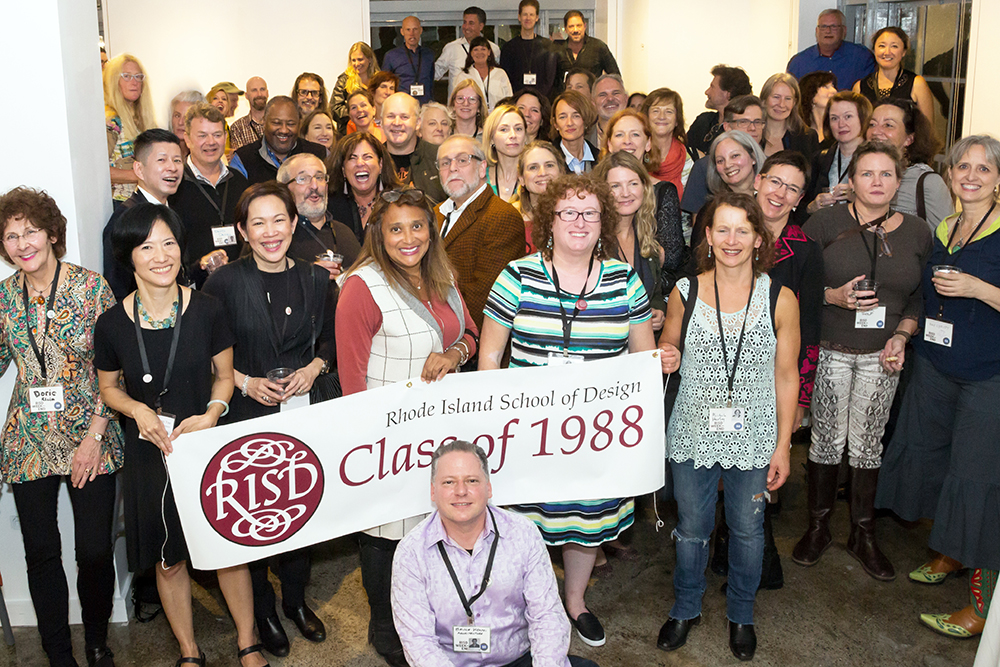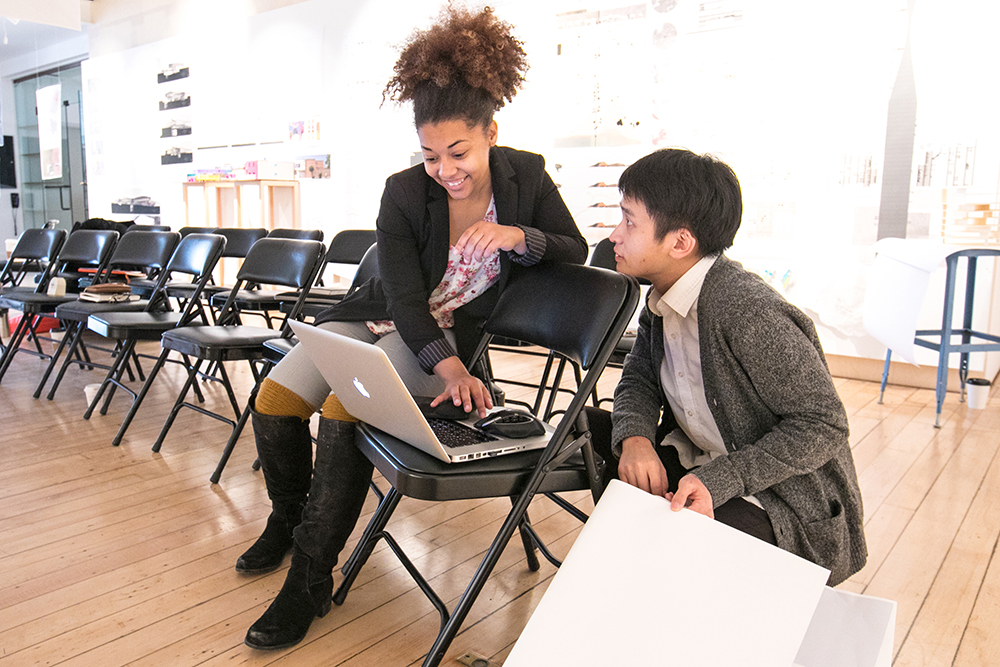
Form and Function
Brodie Neill safeguards the planet, one piece of furniture at a time.
FEW OF US SEE TRASH on a beach and think of creating something beautiful. But we aren’t Brodie Neill MFA 04 FD, the Australian furniture maker whose Gyro table, made from repurposed plastic trash, skyrocketed him to international fame when it was unveiled at the London Design Biennale. No one-hit wonder, Neill’s chart-toppers also include the Remix bench, made for the Apartment Gallery in London; the E-Turn bench and the @ Chair, both of which were recognized in Time magazine’s Design 100; and his Alpha chair, which has a permanent home in the RISD Museum. Like a fashion designer who creates for the runway as well as the closet, Neill is also the creative director and founder of the contemporary furniture brand Made in Ratio.
To refer to him as a furniture maker doesn’t feel quite right. Artist, environmentalist, creative director, businessman, activist—all of these titles also fit— but squishing Neill into any singular profession feels reductive.
“After all these years, it’s still very difficult to put a finger on what it is I do. People always ask me, ‘Is it functional art, is it decorative art, is it design?’ It’s probably more than furniture design, but that’s what I call myself because that’s the safe place that I keep coming back to,” he says.
So we’ll call him a furniture maker. When you meet him, the description fits. Although our meeting was virtual, he in his London studio and me in my Boston apartment, my first impression was how earnest and humble he seemed. He was soft-spoken, even-keeled, with hair slightly askew, wearing a blue work shirt. His backdrop was a bright, high-ceilinged, minimally decorated studio. He looked like he could’ve just been tinkering in a workshop. And he had been, sort of. Before our call, he was in the middle of digitally designing a commissioned piece for a client using the latest three-dimensional technology, with his sketch pad at his side.
Neill creates in a world of opposites. He’s equal parts craftsman and digital denizen, drawn both to past tradition and future technology.
“It’s knowing when to step into one and when to step into the other,” Neill says. “Even though I’m working in this virtual world when I’m sculpting in infinite space, I’ve still got one foot on the ground. I have to imagine how the shadows will play, how the hands will run over it, how the light will bounce off it,” he continues.
He’s never making for the sake of it but constructing in reality, often limited by his own self-imposed restrictions. A table can’t just be a pretty thing; it’s also an object a person must get their legs under, chairs have to fit around it. Everything he builds has to have a function, a purpose.
Neill has been attracted to building furniture, to working with a medium that demands constraint, since he was a kid. Growing up in Tasmania, creativity was nurtured among him and his five siblings. They were often taken to museums and galleries and encouraged to pursue their own artwork. Neill took not to the easel but to the woodshop, making chairs and tables when he was twelve years old.

Below: Commissioned by design research gallery Matter of Stuff, the Latitude bench spans 2.2 meters and is made of 422 salvaged wooden dowels. Photo by Angela Moore.
Below: The @ chair in mirror-polished stainless steel encompasses the entire configuration of a chair within a single gesture. It was included in Time magazine’s Design 100. Photo by Angela Moore.
What compelled him then and continues to fascinate him today wasn’t just artistry but science.
“As a creative child, I wasn’t interested in just sculpture or painting. It was the physics, the science of it, which I found fascinating and still do,” he says.
His mom still has his early pieces, and she isn’t shy about showing them off. Although Neill finds it embarrassing, he also admits with a smile that it’s a testament to his work. Decades later, you could still have a seat in one of those chairs.
He perfected his furniture-making skills at the University of Tasmania and arrived at RISD confident in what his hands could make but curious about what his mind could dream up. He experimented with digital three-dimensional tools and began to release that anchor he had in the real world.
“Some of the early projects I did in the two years I was at RISD inspired a whole series of work,” he says.
After graduation, he moved to New York City and took a job at L’Oréal, designing packaging and displays. Although he found it somewhat interesting, he strongly knew it was not what he wanted to do forever. Along with a fellow RISD grad, Neill took a collection of his work to the young designer’s platform at Milan Design Week. He was quickly recruited to design products for European clients, and he soon decamped for London. There, all of those RISD-born concepts took literal shape. Salvaged wood from a nearby Jaguar car factory became the Infinity bench. That piece went on to Milan Design Week, and Brodie Neill’s career was launched.
Over the past two decades or so, Neill’s star has only continued to rise. What sets him apart from his contemporaries is his progressive use of form and his dedication to reclaimed materials. It would be easier, of course, to simply buy what he needs, but Neill seeks to rescue what has been tossed aside.
“There is no way that my moral composition would be responsible for cutting down virgin trees and dragging them out of the Amazon or somewhere when there is so much material at your fingertips,” he says.
His loyalty to the natural world is rooted to his childhood in Tasmania.
“It’s a very wild and natural place. It’s sparsely populated and has some of the cleanest water and air in the world. The natural materials there are gorgeous, and when they reach your hands, they’ve taken tens if not thousands of years to grow. We have a responsibility to distill some kind of honor into that object and use it in a very respectful way,” he says.
Rhodesian mahogany sourced from a renovated hospital became the Latitude bench and the Altitude chair; reclaimed African hardware, once laid as a herringbone parquet floor at a school, is now the Meridian bench; and a single surface of infinitely recycled bronze makes up the Atmos console and desk.
Perhaps his most stunning example of literally turning trash into his treasure is the aforementioned Gyro table, and the story of its origin takes us back to Tasmania.
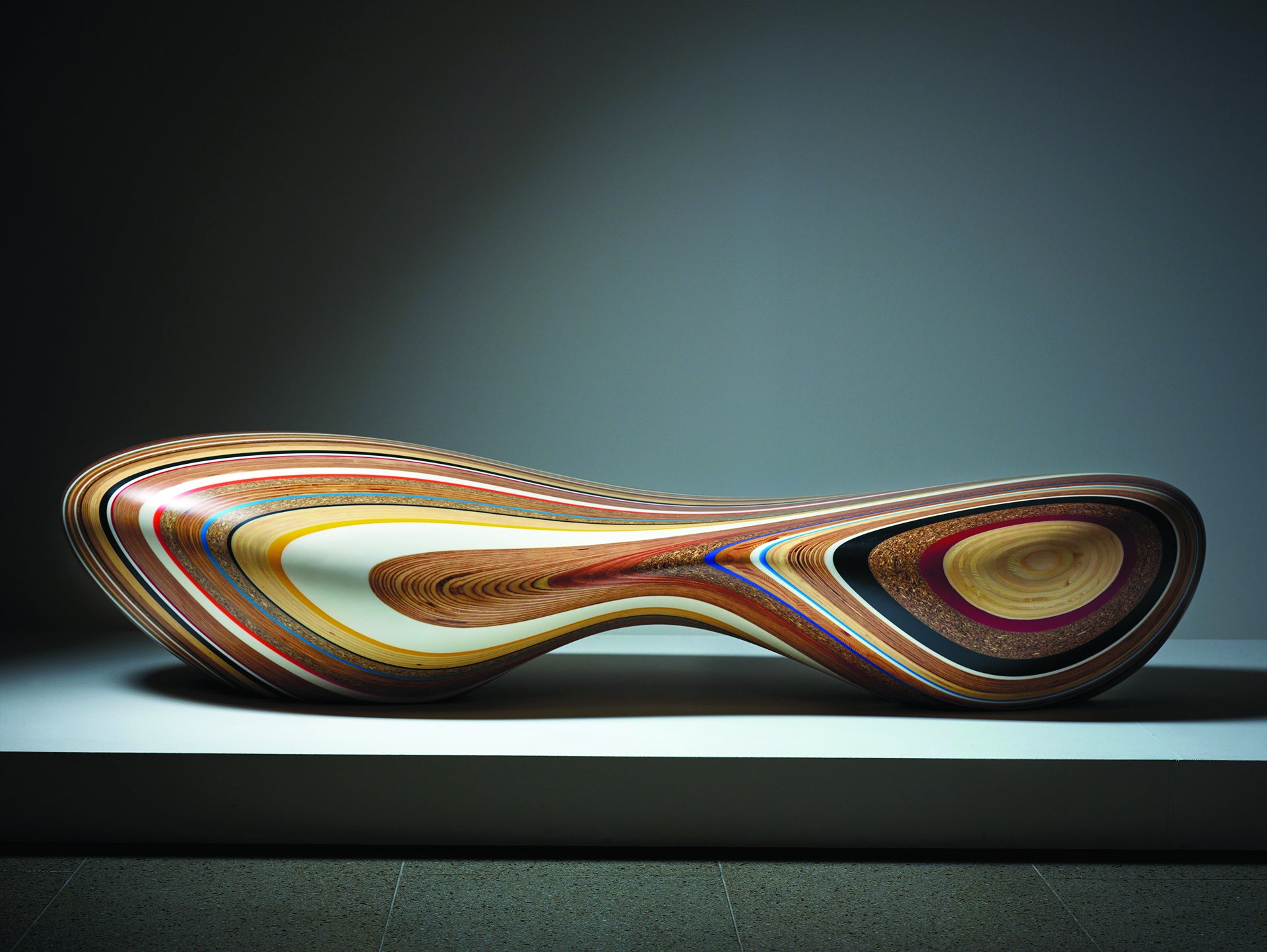
Neill was strolling a remote beach that he used to visit often as a child. He remembered it being picturesque, and now debris scattered around his feet—plastic bottles, lids, a detergent bottle, the handle of a toothbrush—all in various states of decay.
“I was thinking, here is a plastic object that has been made from fossil fuels dug out of the ground, refined and shipped across the world. It’s used for a moment, but the chemical compound in it is designed to be indestructible. I thought something had to be done,” he says.
Coincidentally, Neill had been asked to put forth a submission for Australia for the first-ever international design forum to take place at the London Design Biennale in nine months. He wondered, Could all of those bits of plastic be the foundation? He collaborated with the National Gallery in Australia, the University of Tasmania, marine biologists, oceanographers and beachcombers, who collected tons of plastic trash from their shores.
After some trial and error, Neill turned to a traditional terrazzo technique to bond over half a million plastic fragments together. He then cut and inlaid the “ocean terrazzo” into a kaleidoscopic pattern to adorn the table’s top, creating a modern specimen table. He named it Gyro, from the word “gyre,” meaning a giant circular oceanic surface current.
“When it was unveiled, it was a glowing orb of an object that drew people in. Once they realized that this Milky Way-galactic mosaic was made of half a million fragments of plastic that used to float in the ocean, it really made them understand the magnitude of it,” he says.
Neill himself was as “gobsmacked as anyone” when the top surface was cut back and the tabletop was revealed. What came as an even greater surprise was the international spotlight that shone brightly on Neill. He became an unofficial steward of the oceans. He was invited to talk on nightly news shows, in newspapers, in magazines, on the BBC World Service and at the United Nations. Seven years later Neill has gotten only a bit more comfortable in his role as environmentalist, activist and educator.
“They say art is like putting a mirror up to society. I’m putting people face to face with the problem and turning the problem into a very beautiful solution. They’re objects of hope that tackle some very important environmental issues but are by no means a golden ticket.”
What he knows how to do is rediscover, tinker and return time and time again to the materials. He’s still working with the discarded plastics but he’s found a way to make them into more functional Lego-like bricks. Microplastic fragments left over from the Gyro table went to build the Jetsam table, recently acquired by the Sydney’s Powerhouse Museum as a launchpad to discuss Neill’s work around ocean plastic. He’s still designing with wood, metal and glass for the ever-successful Made in Ratio—reexamining familiar ingredients from a modernist lens.
“People say everything’s been designed before, painted before, written before—come on, there’s still so much to be done,” he says.
Words by Abby Bielagus. Images: The Cowrie chair is inspired by the concave lines of sea shells and is the result of an innovative process that bridges the handmade with the digital. Produced by Made in Ratio. Photo by Angela Moore. The Remix low chaise lounge is made from a mix of reclaimed and sourced plastics and woods which are laminated into a block and then carved by a 5 axis CNC cutter, ensuring a single smooth surface. Editions by the Apartment Gallery London. Photo by Peter Whyte, NGV Triennial.

